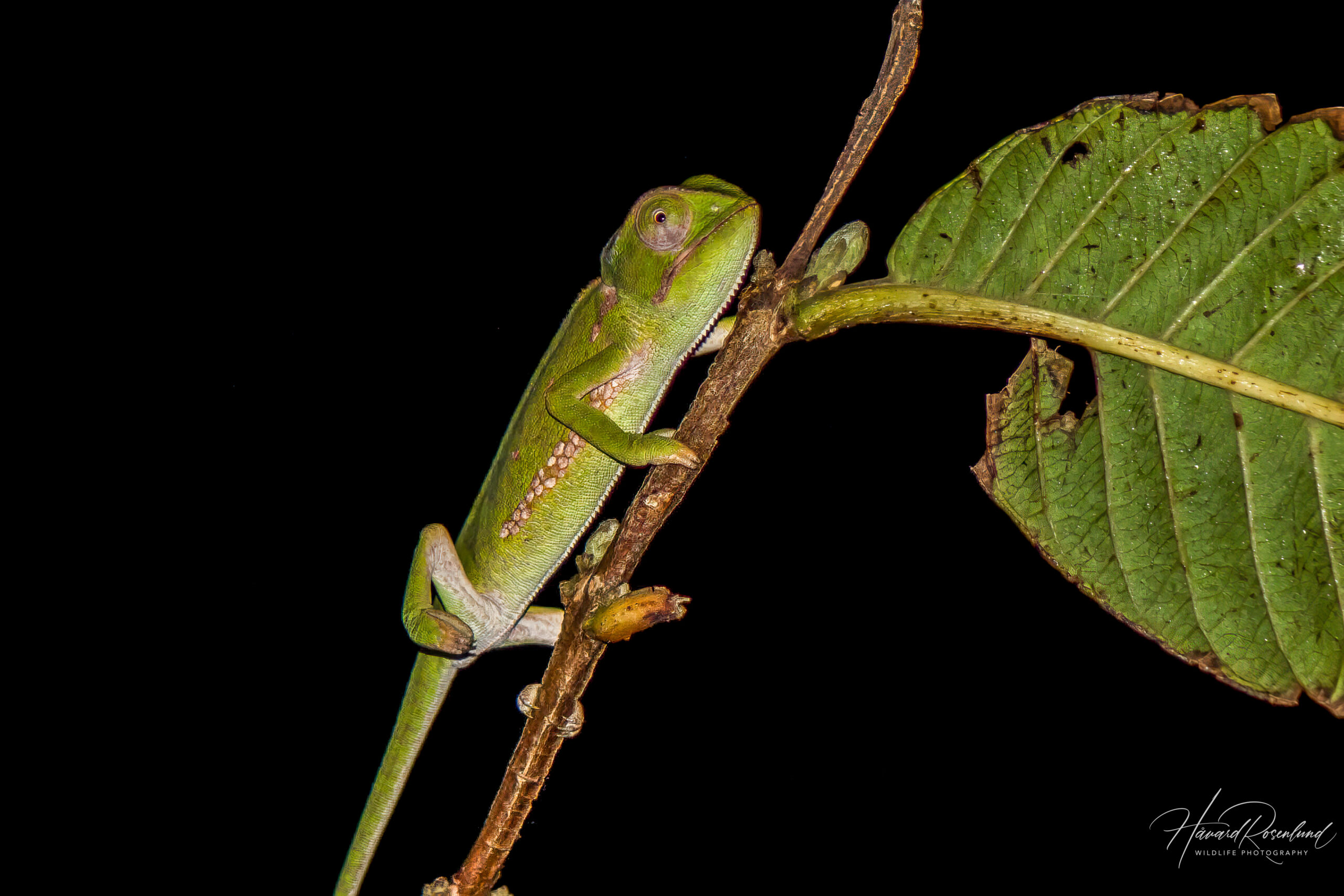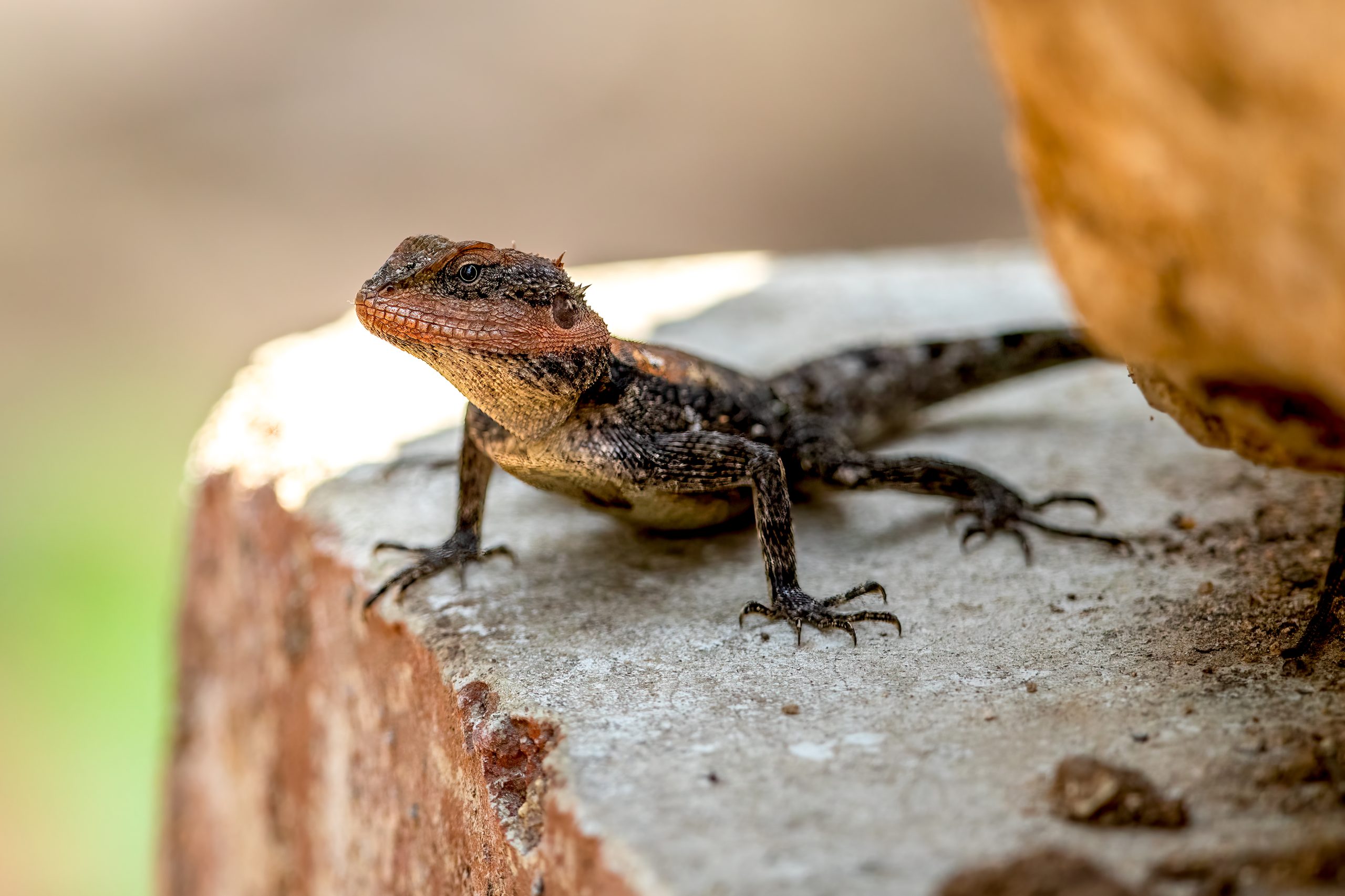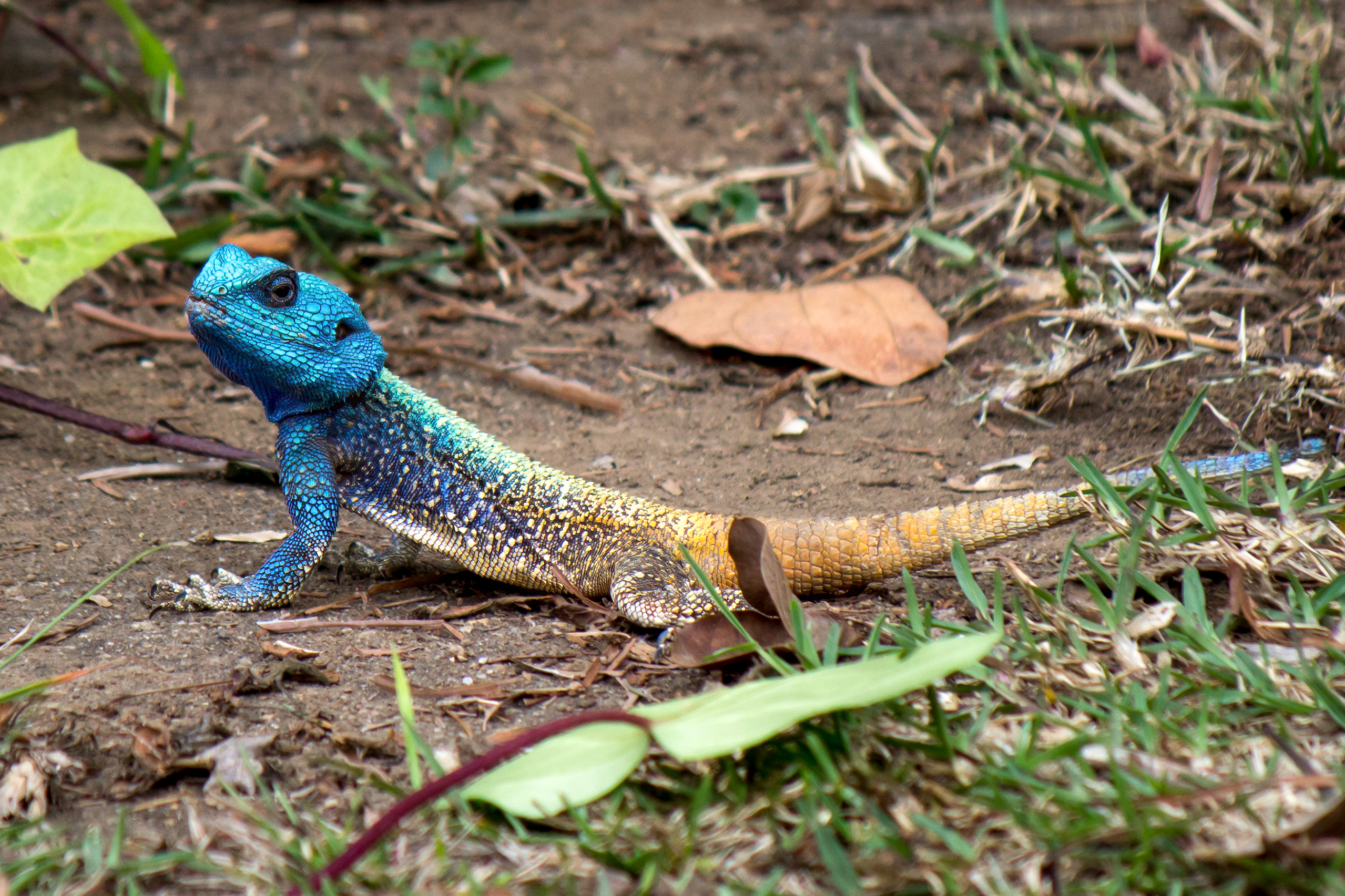Description
The flap-necked chameleon (Chamaeleo dilepis) is a large species of chameleon found across most of Central, East, and Southern Africa. It can reach a total length of 35 cm (14 in) including its tail. Body size is 14-20 cm (5.5-8 in). As the name suggests it has skin flaps on the back of its head, which it can raise when threatened or use to communicate to other chameleons. These flaps vary in size between populations but are generally larger on males. Color also varies, as it can change color depending on the situation (often its mood). It is most often green in color, which can be lighter or darker (it is typically darker when it absorbs heat from the sun), but it can also turn yellow and brown. Sometimes it has prominent markings, such as stripes and spots, other times the coloration is uniform. The species is also characterized by a white line running across its sides towards the belly.
Diet & habitat
The flap-necked chameleon is found in various habitats, such as dense rain forests, dry forests, open forests, savannas, or bushy grasslands. It can also be found in rural and urban areas. This species, like all other chameleons, is an insectivore, and the diet consists mainly of small insects, such as beetles, grasshoppers, and flies. Large individuals are also known to catch smaller reptiles, such as geckos and small chameleons. Chameleons catch prey using their tongue, which is as long as its body when elongated. When a prey is spotted it will fixate on it with both eyes, which can rotate 360° independently, and then shoot its tongue in three hundredths of a second to capture it.
Reproduction
The flap-necked chameleon breeds in late spring to early summer. Males will try to rival each other for mating rights by using skin displays. Once a breeding pair has been established, the mating commences shortly thereafter, and it may last for up to an hour. The eggs take 3-4 months to develop inside the female, which will have a dull coloration and show more aggression during this time. She will dig a hole in the soil before laying somewhere between 10-60 eggs. After 10-12 months the eggs hatch and the young dig themselves out of the hole.
Status
The flap-necked chameleon has an extensive distribution and is quite common in large portions of its range. It also does well close to human habitation. The total population is deemed stable, and it is listed as least concern on the IUCN Red List.
Even though it is deemed stable and of least concern, it is heavily trafficked in the pet trade, where it is the third most traded species of chameleon. Many individuals are captured in the wild, and it is unknown how this affects certain subspecies and populations.








